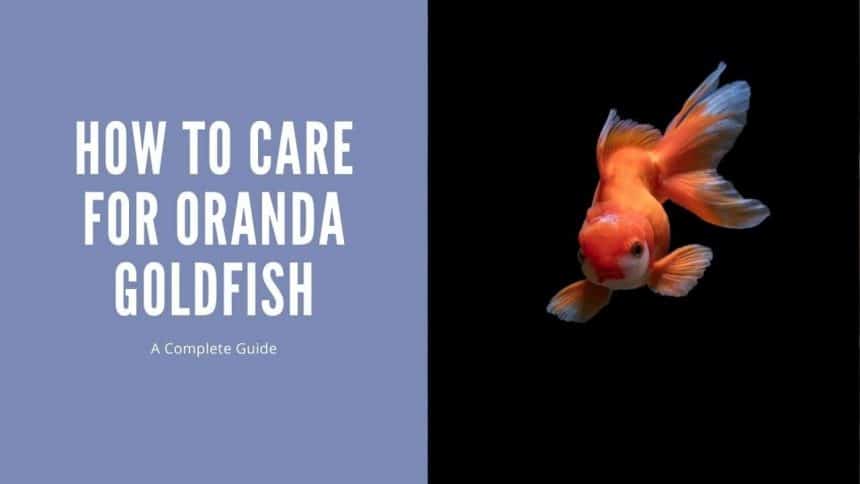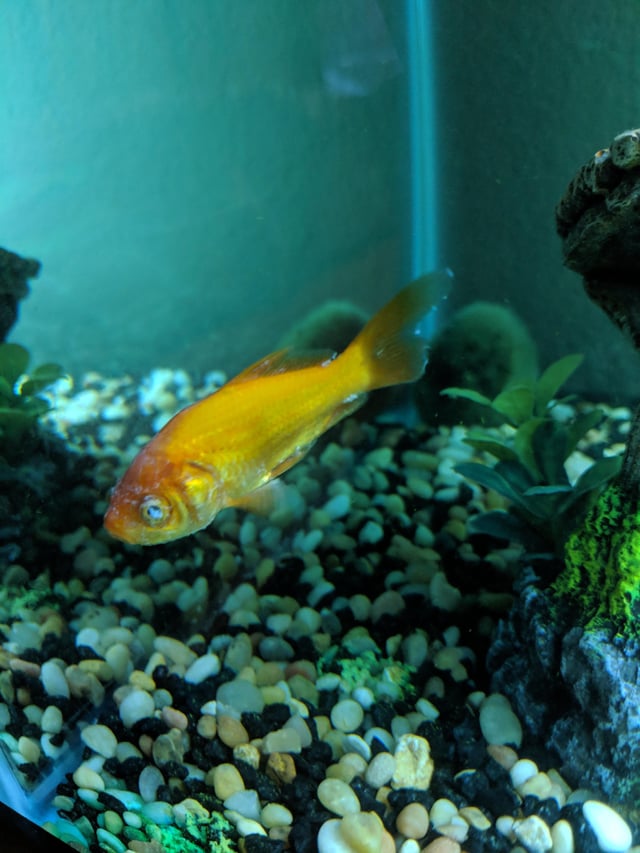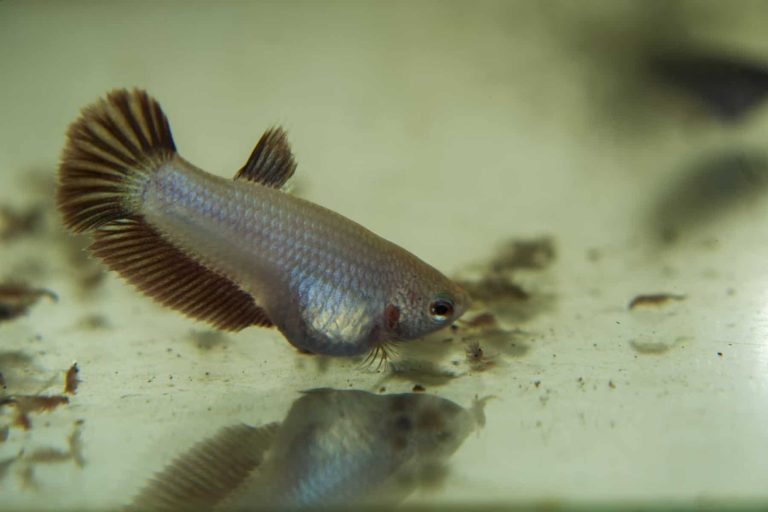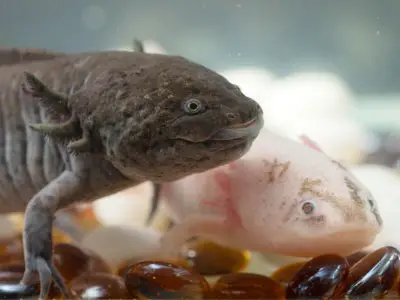The Ultimate Guide to Goldfish Space Requirements
Goldfish require at least 20 gallons of water per fish to thrive and stay healthy. With proper care, they can grow up to 12 inches in length.
When planning to keep goldfish, it is essential to research and understand their environment and space needs. Goldfish require ample space to swim around and maintain their health. The amount of space required depends on the type and number of fish in the aquarium.
Overcrowding can lead to poor water quality and stress, which can adversely affect the fish. Ideally, goldfish should be kept in a tank with a minimum capacity of 20 gallons of water per fish. Additionally, the aquarium should be equipped with proper filtration systems, light fixtures, and heating elements to create a comfortable and healthy environment for the fish.

Credit: aquariumstoredepot.com
Understanding Goldfish Behaviour
Goldfish are fascinating creatures that are often kept as pets. However, many owners do not understand their natural behaviours, which can lead to improper care. In this section, we’ll explore the behaviour of goldfish in their natural environment and how it can be impacted by the size of their tank.
Description Of How Goldfish Behave In Their Natural Habitat
Goldfish naturally inhabit slow-moving freshwater streams, ponds, and lakes in asia. In their natural environment, goldfish:
- Swim long distances: Goldfish are active swimmers that require ample space to swim. They can swim several miles per day in the wild.
- School together: Goldfish are social animals that prefer the company of other goldfish. In the wild, they form large schools for safety.
- Forage for food: Goldfish are omnivorous and will eat a range of food sources, including insects, plants, and small animals.
- Hide in vegetation: Goldfish use vegetation to hide from predators and rest. They can often be found swimming among aquatic plants.
Explanation Of How Goldfish Behaviour Is Impacted By The Size Of Their Tank
As a pet, goldfish are often kept in aquariums or fish tanks. Unfortunately, many owners do not provide adequate space for their goldfish to exhibit their natural behaviours. The size of a goldfish tank can impact the following behaviours:
- Swimming distance: Goldfish require ample space to swim and explore their environment. In a small tank, they may become lethargic and inactive, leading to health issues.
- Social interaction: Goldfish thrive in the company of others, and a small tank can prevent social interaction. In a larger tank, goldfish are more likely to school and interact with each other.
- Foraging for food: A smaller tank may not provide enough space for goldfish to swim and forage for food, leading to overfeeding and health issues.
- Hiding and resting: Without ample vegetation or hiding places, goldfish may become stressed and unhealthy. Providing ample hiding places and vegetation can reduce stress and anxiety in goldfish.
Understanding the natural behaviours of goldfish is crucial to providing proper care. By providing a tank that is large enough to allow for swimming, social interaction, foraging, and resting, goldfish owners can ensure that their pets lead happy and healthy lives.
Determining Tank Size
Factors To Consider When Determining Tank Size For Goldfish
When it comes to goldfish, deciding on the appropriate tank size can have a substantial impact on their overall health and well-being. Here are some vital factors to consider when determining the ideal tank size for your goldfish:
- The number of goldfish you plan to keep: A general rule of thumb is that you should have no more than one inch of goldfish per gallon of water in your tank.
- The type of goldfish: Different types of goldfish have varying needs when it comes to water space. For example, larger species like the common goldfish, comet goldfish, and shubunkin require more swimming space than smaller breeds such as the fancy goldfish.
- The age of your goldfish: Younger goldfish may not need as much room, but they will outgrow their tank quickly. Consider the potential growth rate of your goldfish when determining tank size.
Calculation Of The Recommended Tank Size Based On The Number And Type Of Goldfish
Now that you know the factors to consider, let’s calculate the recommended tank size based on the number and type of goldfish you plan to keep. Here is a general guideline to follow:
- For one common or comet goldfish, you will need a tank size of at least 55 gallons.
- For every additional goldfish, add another 10 gallons to the tank size. So, if you want two goldfish, you’ll need a 65-gallon tank, and if you want three, you’ll need a 75-gallon tank.
- For fancy goldfish, you will need a tank size of at least 20 gallons for one goldfish and 10 gallons for every additional goldfish.
Keep in mind that these calculations only provide a general guideline, and you should always consider the individual needs of your goldfish.
The Importance Of Providing Ample Swimming Space For Goldfish
Goldfish are active swimmers and require ample space to move around. When determining the tank size for your goldfish, it’s crucial to provide them with enough room to swim comfortably. Here are some reasons why ample swimming space is essential for your goldfish’s health:
- Goldfish produce a lot of waste, which can lead to poor water quality. Having a larger tank size allows for more water volume, which can help dilute waste and maintain water quality.
- Insufficient swimming space can lead to stress and behavioral issues in goldfish, which can affect their overall health and lifespan.
- Goldfish need plenty of oxygen to survive, and providing them with a larger swimming area can increase oxygen levels in the water and help them breathe more easily.
Determining the appropriate tank size for goldfish requires careful consideration of several factors. By following the recommended guidelines and providing ample swimming space, you can ensure your goldfish live long and healthy lives.
Setting Up The Tank
Tips For Choosing The Right Location For Your Goldfish Tank
When setting up your goldfish tank, choosing the right location is crucial. Here are some tips to keep in mind:
- Avoid direct sunlight: Goldfish tank should be placed in a location that does not receive direct sunlight. Excessive sunlight can lead to the growth of algae in the tank.
- Choose a stable surface: As your tank may be heavy when filled with water, it is important to choose a stable surface that can bear its weight.
- Keep away from noisy areas: It is essential to keep your goldfish tank in a quiet and stable area, away from areas with a lot of noise or foot traffic.
- Select a well-ventilated location: Goldfish require clean and oxygen-rich water to survive. Therefore, it’s important to keep the tank in a well-ventilated area to help promote air exchange.
Importance Of Proper Filtration And Aeration In Goldfish Tanks
Proper filtration and aeration are critical for maintaining a healthy and happy goldfish. Here is why:
- Filters remove waste products: Filters are designed to remove the excess food debris, fish waste, and other organic matter that can make the water dirty and unhealthy for your goldfish.
- Aeration promotes oxygen exchange: Goldfish need clean and oxygen-rich water to breathe. Aeration pumps help increase the oxygen level in the water and prevent the water from becoming stagnant.
- Maintenance is easier: With proper filtration and aeration, water quality improves and becomes easier to maintain, leading to happier and healthier goldfish.
Guidance On Selecting The Appropriate Substrate And Decorations For Your Goldfish
When it comes to selecting substrate and decorations for your goldfish tank, there are some things you need to consider:
- Avoid sharp objects: Goldfish are sensitive creatures that can get easily injured by sharp objects. Therefore, it’s best to choose smooth and soft decorative items.
- Choose appropriate substrate: Gravel is a popular substrate that is easy to clean and stimulates the goldfish’s natural environment. However, ensure the gravel is of an adequate size, as larger gravel can lead to food getting stuck and leftover debris.
- Add plants: Goldfish love plants and they help enhance the water quality by absorbing excess nitrate, promoting a healthy natural ecosystem for your goldfish.
- Avoid over-decorating: While decorations and plants can make your goldfish tank look attractive, it’s important not to overcrowd it, as goldfish need plenty of swimming space. A cramped tank can lead to stress and illness.
Maintenance And Care
Overview Of The Cleaning And Maintenance Requirements Of A Goldfish Tank
When it comes to goldfish, most of the maintenance work must focus on their living environment. As the owner of these fish, you must take proper care to ensure their tank is always clean, refreshed and their habitat maintained. Here are some key points to note:
- Clean the tank every two to four weeks, replacing 25% of the water each week.
- Use a siphon or a gravel vacuum to remove debris from the bottom of the tank.
- Don’t forget to scrub algae from the tank, as it can harm the fish’s health.
- Use a water conditioner and ph testing kit to keep the water in optimal condition for goldfish.
Explanation Of How To Maintain Optimal Water Quality For Goldfish
Water quality is crucial to the health of your goldfish. Here’s how you can maintain optimal water quality for your pets:
- Monitor water temperature, ph levels, and nitrate levels daily.
- Use aquarium salt to help keep the tank free of harmful bacteria.
- Use an air pump to keep the water oxygenated.
- Change the water 25% every week and replace any filter material once per month.
Tips For Identifying And Addressing Health Issues Associated With Poor Living Conditions
Poor living conditions can lead to health issues for goldfish. Here are some tips to identify potential health issues and address them:
- Look for signs of stress, including lethargy and laboured breathing.
- Keep an eye out for signs of disease, including fin rot, swim bladder disease and dropsy.
- If you notice any of the above signs, change the water or test the water quality right away, and consult an expert if the symptoms persist.
Follow these simple tips to provide your goldfish with a clean, healthy and happy living environment.
Frequently Asked Questions Of How Much Space Do Goldfish Need
How Much Space Does A Goldfish Need?
A single goldfish requires 20-30 gallons of water, adding 10 gallons per additional goldfish.
Can Goldfish Live In A Small Bowl?
Goldfish cannot live in a small bowl. They require a tank with a minimum of 20 gallons.
How Many Goldfish Can You Put In A 50-Gallon Tank?
You can house two to three common goldfish, or four to five fancy goldfish, in a 50-gallon tank.
Can Goldfish Be Kept In An Outdoor Pond Year-Round?
Yes, goldfish can be kept in an outdoor pond year-round, as they can adapt to changes in temperature.
Conclusion
Goldfish are fascinating creatures to keep as pets, but their needs are often misunderstood. Knowing how much space your goldfish requires is essential to ensure they are healthy and thrive in their environment. From the information provided in this article, it is clear that goldfish need a lot of space to live comfortably.
With the right tank size, filtration system, and proper care, your goldfish can live a long and happy life. Don’t make the mistake of keeping your goldfish in a small bowl or tank because they need much more than that.
Give your goldfish the space they need to swim and grow by providing them with a suitable aquarium. Finally, with just a little extra effort and care, you can create a peaceful and beautiful underwater habitat for your goldfish to call home for years to come.






